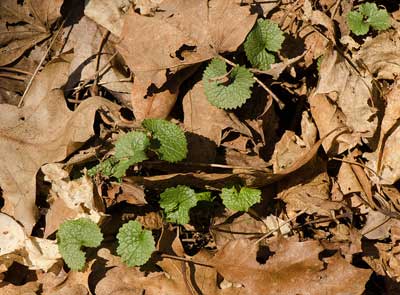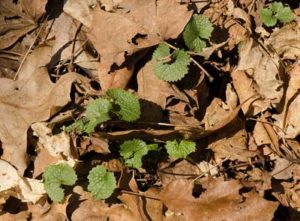
Checking for Two Greens – Hope and Uncertainty
Every spring, hope and uncertainty unfurl their green leaves. After our stubborn winter, a spring wildflower’s resolve to emerge is hope. Landowners beware, though, uncertainty also emerges in spring.

Garlic mustard is among the first green plants you’ll see in spring. Its ability to spread rapidly and crowd out native wildflowers and tree seedlings means uncertainty for your woods.
Early spring is a perfect time to enjoy the signs of hope, but also to spot the signs of uncertainty.
“We walk our entire property looking for it, making sure any new populations are caught early,” says landowner John Peterson. “Patches get an orange flag to ease locating and spraying them later. It’s not all work either; we see parts of our woods we rarely go to.”
In early spring, garlic mustard leaves are heart-shaped and smell of garlic when crushed. They are often identified at the rosette or flowering stage, and often occur in circular patches because seeds fall close to the parent plant.
Irrigation flags, three-feet tall and bright orange, are great for marking garlic mustard populations. They hold up well for a couple of winters and are available at agricultural supply stores.
